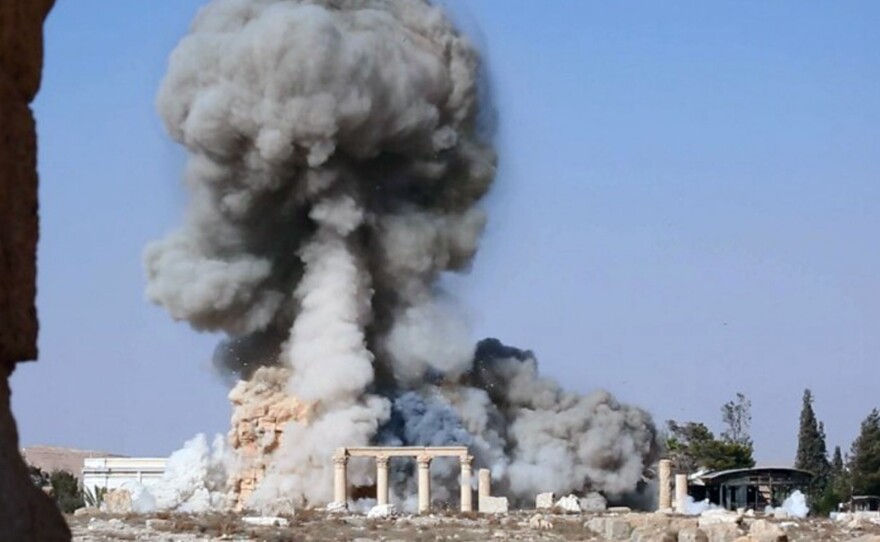The so-called Islamic State continues to wreak a human toll in the Middle East. And in addition to that suffering, the militant organization continues its assault on Syria's cultural heritage.
This week, militants blew up three tombs in the ancient city of Palmyra, and reduced the Greco-Roman Temple of Bel to rubble.

At the same time, ISIS also profits by selling small antiquities on the black market.
The British Museum says it's holding an object looted from Syria, and will return it only when it's safe to do so.
But should museums in one country be safeguarding artifacts extracted from another? Or is it more important that those objects stay where they came from?
James Cuno, the president of the J. Paul Getty Trust in Los Angeles, has been thinking about those issues. In a letter to the New York Times earlier this year, he wrote: "This unconscionable destruction is an argument for why portable works of art should be distributed throughout the world and not concentrated in one place. ISIS will destroy everything in its path."
Cuno told NPR's Scott Simon about how, and why, he believes such cultural artifacts should be protected.
Interview Highlights
On why he thinks many artifacts should be taken out of their home countries
It distributes the risk to them, to their survival, over many places. I like to say that it is the case that calamity can happen anywhere, but it won't happen everywhere simultaneously. But when things are preserved and kept in one place, it puts them at greater risk.
On the British Museum's possession of an object taken illegally from Syria
I don't know the circumstances of that but I know that in the United States, we can't do that with regard to Iraq. There was a law passed after the U.S.-led invasion of Iraq that all such materials, if they are found in the United States, should be returned to Iraq. Therefore we would have to, and have recently, returned things to Syria and Iraq and put them, probably, in harm's way.
...
I think [that law] should be changed. I think it's extremely reasonable. We do take refugees; I think we could take refugee objects as well.

On how to protect a structure like a temple
It's extremely different. You know, [portable artifacts] we can address by policing those borders to try to prevent or inhibit the illegal trade of objects across borders.
But when it comes to the built heritage, we have to take the risk of military intervention whereby ... to protect those sites — and the United Nations have a means of doing so, through the Blue Helmet system, but it is only at the invitation of the local sovereign authority. And that's not likely to happen because those states are in calamitous situations, currently.
On the objection that the U.N. can't even agree to intervene to protect human life, let alone antiquities
It's a very hard argument to make, that I understand. But as I said, the natural resources, human resources, cultural resources — they're all part of what is the world, and all need to be preserved.
Copyright 2022 NPR. To see more, visit https://www.npr.org. 9(MDAzMjM2NDYzMDEyMzc1Njk5NjAxNzY3OQ001))






